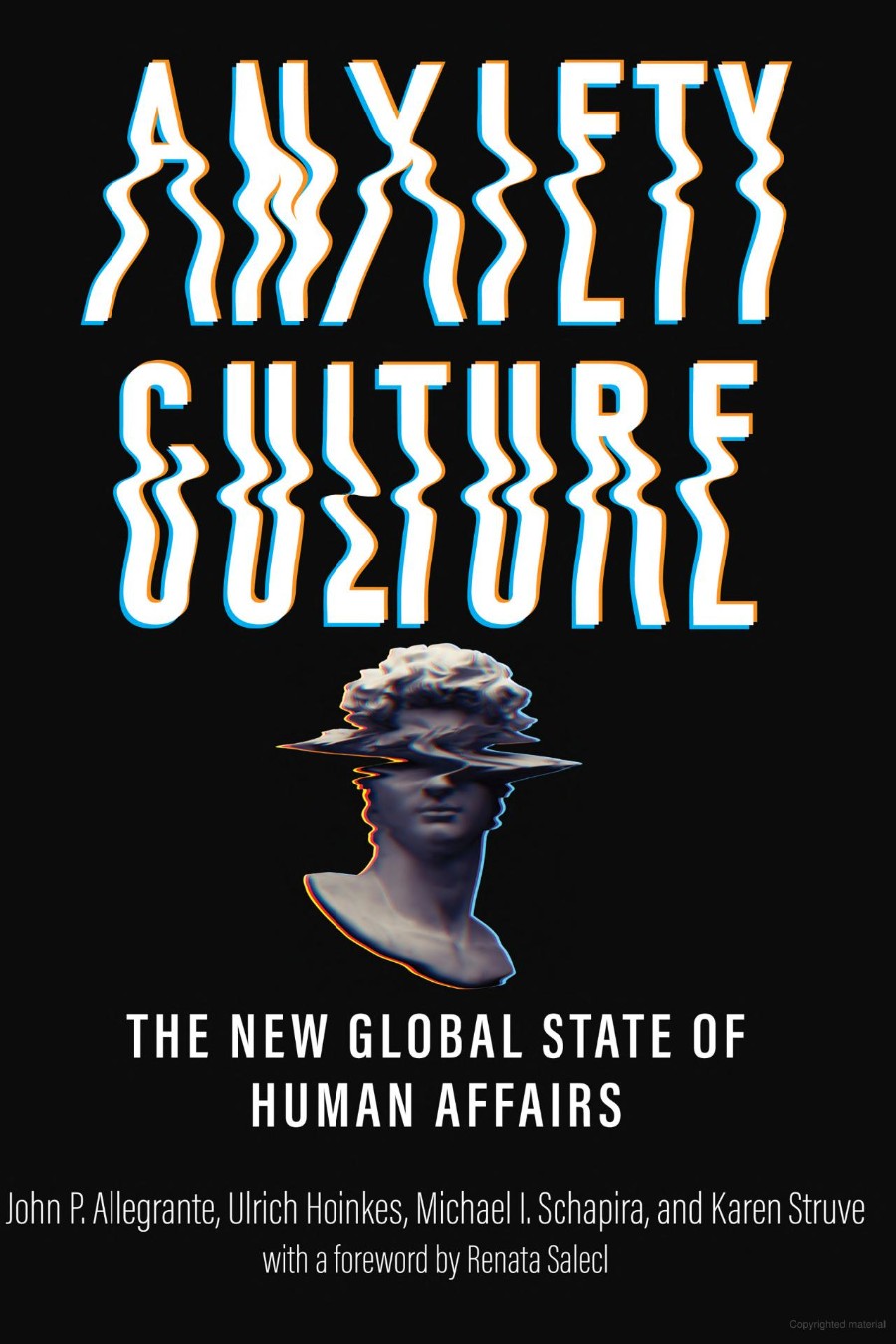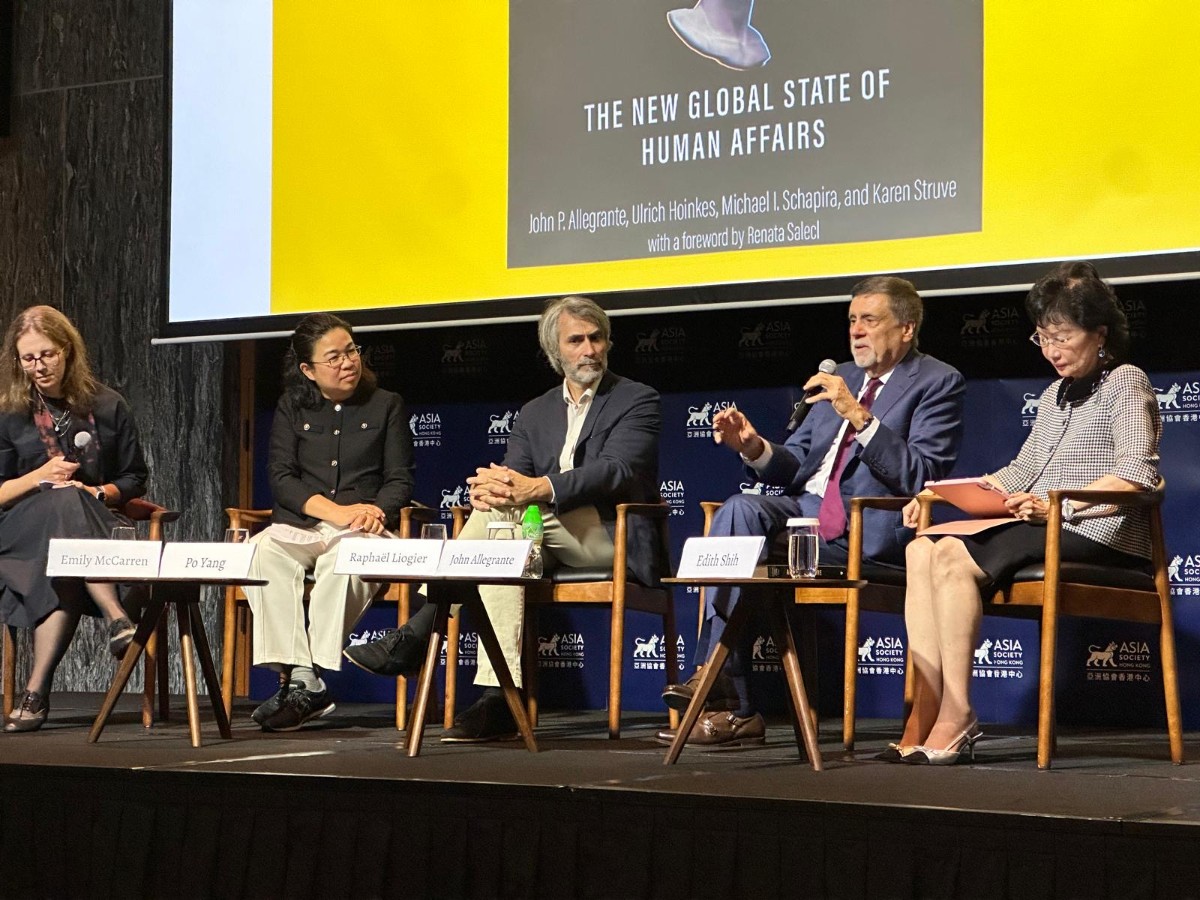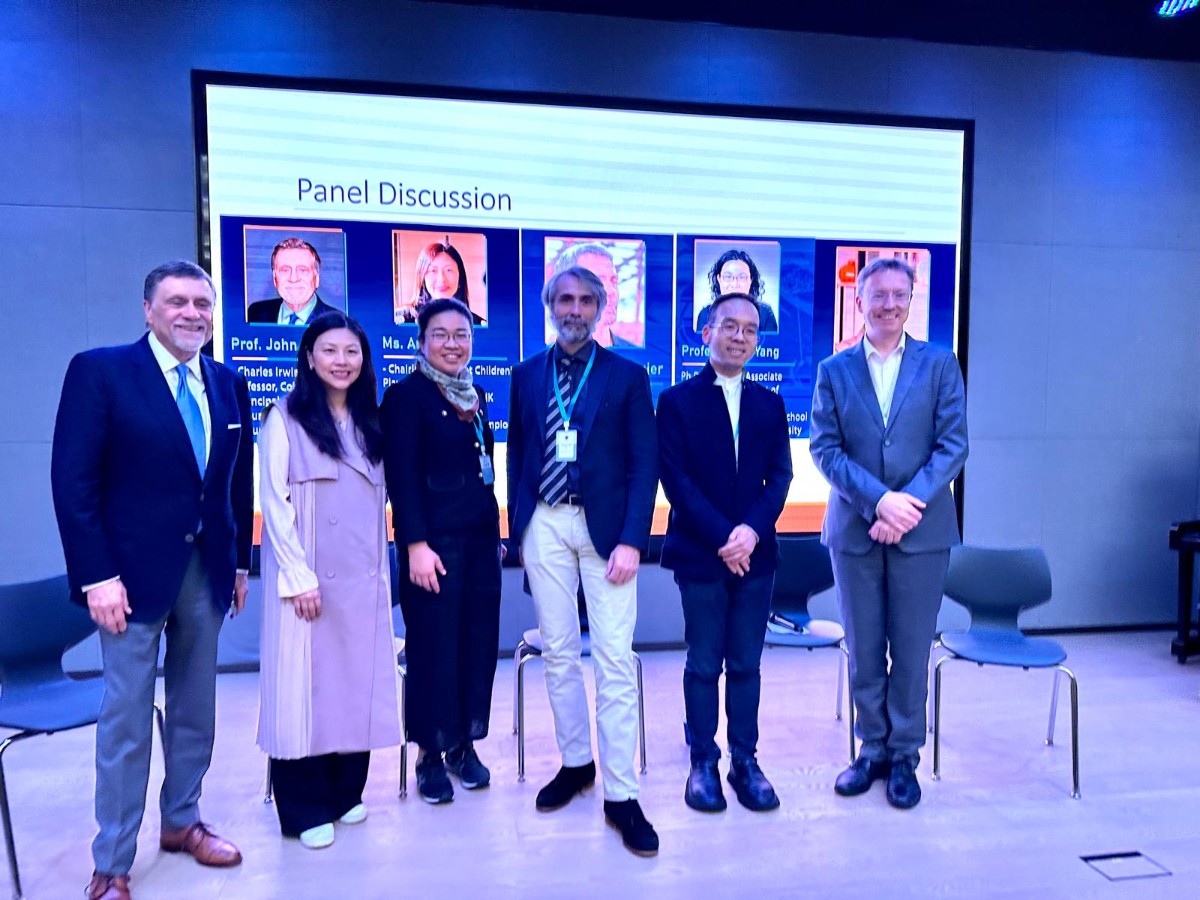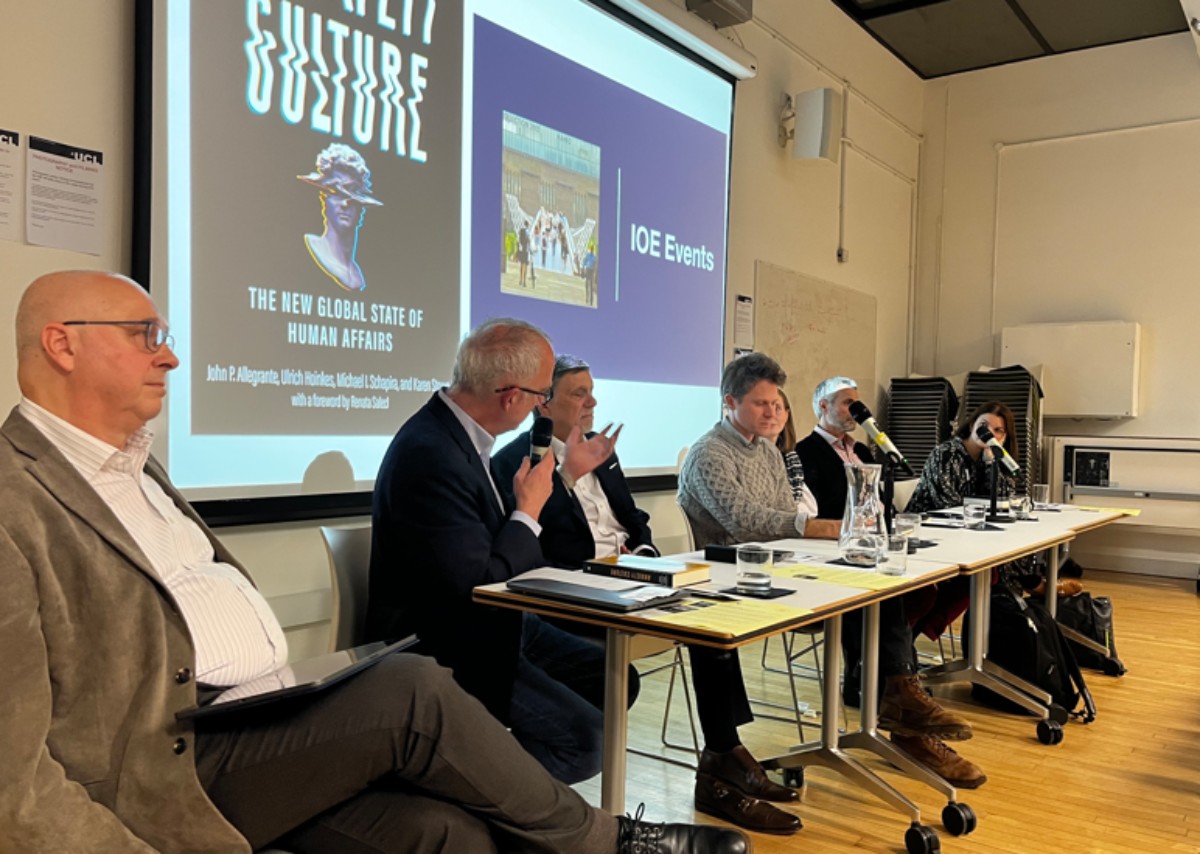Anxiety disorders affect nearly one-third of U.S. adults, with numbers steadily rising each year, according to the National Institute of Mental Health (NIH). But what’s driving this surge, and how can we better understand it from a sociocultural perspective?

(Photo courtesy of Johns Hopkins University Press.)
In his new book, Anxiety Culture: The New Global State of Human Affairs, TC’s John Allegrante, Charles Irwin Lambert Professor of Health Behavior and Education, his three co-editors, Ulrich Hoinkes, Michael Schapira (Ph.D. ‘14), and Karen Struve, and contributing authors from around the world, explore the societal factors driving this global crisis — from climate change and health challenges to school violence and the impact of technology — and examine how we can better understand what is believed to be a new wave of “anxiety culture” in today’s evolving world.
“This book has been shaped by interdisciplinary conversations that began in 2015, integrating perspectives from scholars in the behavioral, social and biological sciences, and humanities, and offering a unique approach to understanding ‘anxiety culture’ as a new construct,” Allegrante says. “Thus, anxiety culture is a construct that we believe is a heuristic with which we can gain a deeper understanding of the changing face of our societies and that can enable us to offer better coping strategies for living in these times of uncertainty.”
We spoke with Allegrante to learn more about just a few of the topics covered throughout the book.
On Adolescent Anxiety
Today, anxiety disorders are among the most prevalent mental health concerns in adolescents, with 31.9 percent of young people receiving at least one anxiety diagnosis in their lifetime.
In the chapter "Adolescent Anxiety: Iceland as Canary in the Coal Mine," Allegrante draws on over a decade of research with his Nordic colleagues and explores how social conditions influence adolescent behavior. “Our work has shown that the canary [young people] has been sounding an alarm, and it is time for us to fix the coal mine [the social conditions of young people]. For example, we’ve noticed that substance use prevention must understand the larger influences of community, including parents, peers, school and leisure time activities, on adolescent behavior.”

John Allegrante, Charles Irwin Lambert Professor of Health Behavior and Education.
Allegrante asserts that support starts with open dialogue and advocacy for mental healthcare interventions from practitioners and policymakers. “Policymakers have to recognize that we can help teach young people that emotions are adaptive—young people should not be taught to fear anxiety,” he writes. “Instead, they should be taught that it is important to learn how to accept the reality of anxiety and respond to these emotions in healthy ways,” a message he drove home to an audience of students and their parents in his Keystone Academy, Beijing, Education Salon keynote speech, Living with Uncertainty - How to Endure When Stability Slips Away, last November.
On Climate Anxiety and Environmental Changes
According to Allegrante and contributors to the book, 67 percent of young adults (ages 18–23) in the U.S. report being “somewhat” or “very concerned” about anxiety and its impact on their mental health, compared to just 42 percent of older adults (ages 56–74).
“Climate change triggers a range of emotions — fear, grief, guilt, anxiety, anger, hope and even solastalgia, or distress caused by environmental changes,” explains Allegrante. “Many young people feel dismissed when expressing climate anxiety. Supporting them starts with something simple: listening.” He adds that other coping methods include self-care, social connection and getting involved in climate justice initiatives in your local community.
Learn More: Anxiety Culture Around the Globe
On School Gun Violence
With over 488 mass shootings in 2024 alone, school gun violence remains a growing cause for youth anxiety across America. Frequent preparedness drills, heightened school security measures and tragic news coverage are among just a few of the challenges that students navigate, all of which contribute to a sense of fear and uncertainty about the future.
“Our society has talked about poor mental health as a precursor to gun violence, but we have not equipped schools with the resources to address and respond to indicators of poor mental health sufficiently,” writes TC’s Sonali Rajan, a contributor to the book whose research focuses on gun violence prevention and intervention. “K-12 schools must recognize the anxiety caused by the anticipation of school gun violence as they consider more effective ways to prevent this kind of violence.”
In addition to accessible mental health resources, Rajan adds that parents can support their children by providing them with a safe, calm home environment to share their concerns openly. “Parents might also familiarize themselves with their local school's communication and safety procedures and limit children's exposure to graphic details via the news where possible. That being said, the onus must be on our health, justice, and educational systems to together ensure that schools are spaces that are not just free from violence, but spaces where all children can thrive.”
The world is changing, and perhaps young people are simply telling us, whether knowingly or not, that they are noticing. Although they may not know how to respond to these feelings, it is incumbent upon us to provide them with the right messages and tools to cope in a world of uncertainty.
On Technology and Social Media
With the rise of new technologies like AI and a growing era of misinformation on social media, it can feel impossible at times to unplug from our devices and spend time offline, so it’s no surprise that technology and social media have become driving causes of the stress and anxiety people experience.
“The hyperconnectivity that is fostered by social media platforms has accelerated anxiety culture across the globe,” shares Allegrante. “Increasingly, 24/7 access to news cycles, the spread of misinformation and the dynamics of social networks is enough to accelerate fear and anxiety at any age.” The book draws on insights from countries like Germany and Japan on how citizens navigate hyperconnectivity and rapid technological growth.
“Social media encourages people to constantly engage in self-promotion, to try to stand out from the crowd and curate a perfect image of their lives,” writes Renata Salecl, the Slovenian philosopher, sociologist and legal theorist who wrote the Preface to the book. To combat this, spending more time offline can make a difference. “It’s important to reduce screen time and engage in other activities,” Allegrante advises, noting that reading a book, walking or hiking outdoors, especially in natural surroundings, or spending time engaged face-to-face with family and friends is an excellent place to start.




